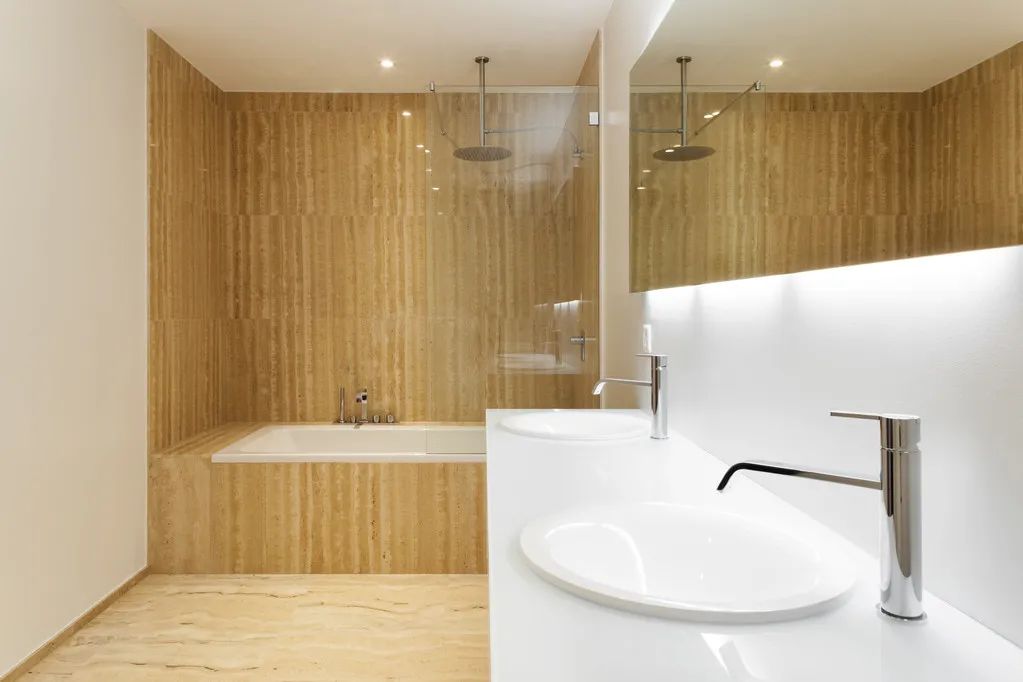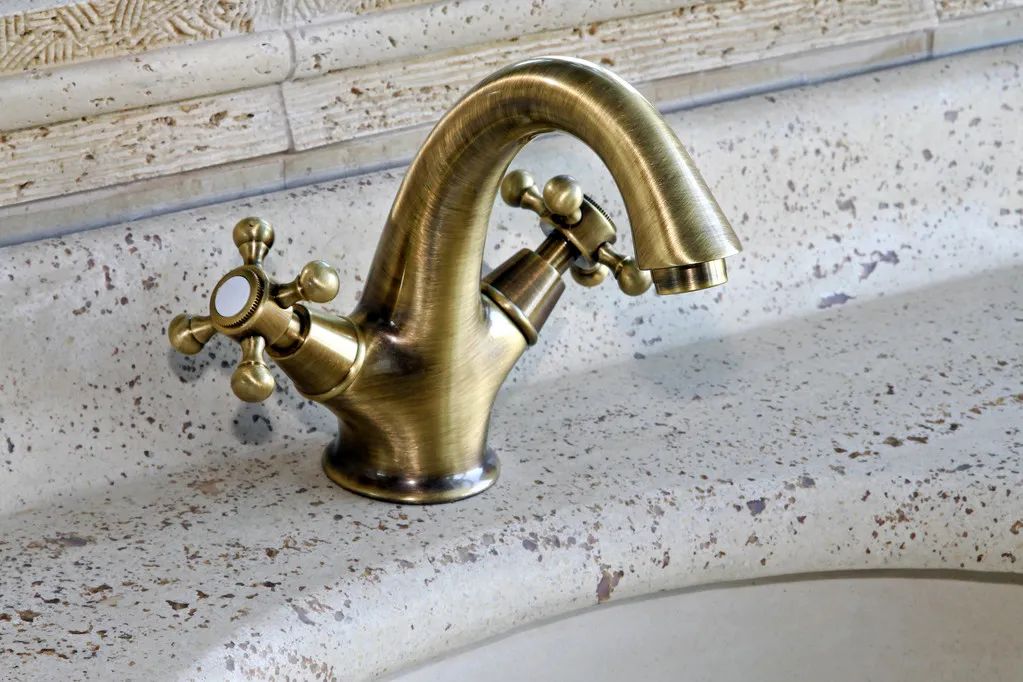Bathroom Business School
Previously we have introduced the structure of the faucet (detailed click >>> Science! Faucet composition structure, types and characteristics) faucet overall structure is divided into spool, the main body, the surface layer. The spool is the part that controls the flow of water in and out, is the heart of the faucet, can be durable depends on here. The main body is the main component of the faucet, that is, the skeleton, most of the water pollution is this part of the material is not good. Plating is the surface material of the faucet, which is the skin of the faucet, it is the face of the faucet.
Faucet material selection is very important, today mainly about zinc alloy, stainless steel and all copper these three.
1, Zinc alloy faucet
Zinc alloy has a low melting point, plasticity and other characteristics. It can also be corrosion-resistant in the atmosphere. It is mostly used to manufacture faucet handles or some hardware pendants for the bathroom. (More than 95% of the faucet handles seen daily are made of zinc alloy material).
However, the corrosion resistance of zinc alloy in water is not good, unless it is made of zinc, aluminum, magnesium and copper, which are alloys of very high purity.
However, because of cost issues, many manufacturers will use zinc alloys containing elements such as lead, cadmium and tin in excess of the standard instead. These elements dissolve in water and can easily corrode the casting. This will have an impact on human health.
2, Stainless steel faucet
Stainless steel faucet does not need electroplating, the surface polishing treatment can be. It has a smooth and delicate feel and does not contain lead (processing may carry a little, but negligible). It is corrosion-resistant, almost never rusts, and is more durable.
Stainless steel faucet may be more common in life, many families are using this one. Generally has the following two advantages.
① Stainless steel faucet is lead-free and resistant to acid, alkali and corrosion. It will not contaminate the tap water.
② The hardness and toughness of stainless steel faucet are more than 2 times higher than copper. Its surface never rusts, never deforms, and never corrodes.
Disadvantages.
① Because of the hardness of stainless steel, the use of precision casting process is much more complicated than copper. It is expensive supplies, and sealing is not good, so the price is also more expensive.
② Although stainless steel is said not to rust. But if you buy bad business inferior goods, when you use it for a long time, it will still appear some rust.
③ Stainless steel is a new industry. In the production process will inevitably add a variety of toxic heavy metals. Although there is no data that long-term soaking in water will not precipitate these heavy metals, I am afraid that someone in order to reduce costs, and therefore can not guarantee the production of real stainless steel.
And 304 is a universal stainless steel, more common in the market. The standard 304 stainless steel faucet contains about 18% chromium and 8% nickel.
To say that stainless steel faucets have something to fear, that is, chloride ions. If the surface oxide film is not well done, it will still produce the phenomenon of corrosion. The key depends on the brand. In addition, because stainless steel is hard and difficult to process. And this process is still immature, the price of stainless steel faucets will be relatively high.
3, All copper faucet
As long as the main valve body is copper faucet, it is known as all-copper in the market. Full copper refers to the faucet body for the copper content of 59% or more. All copper is a call, copper alloy is the type of material, we should not be confused. In fact, for copper faucet, because the purity of copper, supporting parts of good or bad, workmanship and other aspects affect the final quality of the faucet. For the copper quality is good or bad, consumers can not directly distinguish. Relatively speaking, buying a better reputation of the brand quality is more secure. Engineering needs to take the product to do spectral analysis testing. On the market in general, the copper quality of the faucet is 57-2 copper, 57-3 copper. Poor quality copper and 54 copper and so on. These also have a lot of manufacturers do. Most second-tier brands and first-tier brands will use 58-2 copper, 59-1 copper.
Hpb59 is the more widely used lead brass. It represents the meaning of copper content in about 59%. All-copper faucets are generally used in this national standard brass or brass with similar composition.
There is a benefit of using copper for faucets, that is, the sterilization effect of copper ions can purify the water. The reason why lead is added is because it can increase the machinability of copper, making it easier to process.
And for the lead precipitation problem, you can not generalize. The amount of lead precipitation in a qualified brass faucet is very small. It is also in line with the standard, so do not need to worry too much.
Brass faucet according to the material can be divided into non-standard copper, national standard copper, other copper faucet. At present, some high-grade faucets at home and abroad are made of copper. All-copper faucets also have the following two advantages.
① Copper alloy is the most suitable faucet body material. Because copper ions have a certain sterilization effect. All-copper faucet can kill 99% of the bacteria in the tap water. And, it can make bacteria unable to produce antibodies. Simply put: copper faucets do not breed bacteria on the inside. This is its unique quality conditions unmatched by other materials.
② All-copper faucets have wear-resistant, easy to process and other characteristics. General high-grade faucets are made of copper. Because of the high cost of raw materials, the price is also more expensive.
Brass in copper alloy, which is a combination of copper and zinc, also contains trace amounts of lead. Here, many friends may express disbelief, is an alloy? It contains lead, so that it will not lead poisoning?
Because of this, after adding zinc and a small amount of lead, it has better mechanical properties and wear resistance. It is corrosion-resistant, more suitable for faucet production.
Here to say: because of the amount of copper content, brass is also divided into many types. Among them, H59 copper is currently used by most faucets. Brass contains about 57%-61% copper and less than 1.9% lead, and it has undergone a 24-hour salt spray test. It conforms to the C/T1043-2007 “spout lead precipitation limit” of this provision. Other content is also in line with national standards, there is no direct harm to the human body, so we do not need to have too much concern about it. In fact, some international bathroom brands will even use H62 copper to produce faucets, because H62 copper is relatively higher than H59 copper copper content, better corrosion resistance.
In the case of price, all-copper faucets are not cheap. Good quality faucet, are hundreds of dollars, but it will be cheaper than the stainless steel. After all, the price of raw materials is there. It is understandable that it is required to go through multiple processes such as casting, polishing and plating.
Suggestions: If you value the shape, you can choose a thick and textured, diverse copper faucet. If you pay attention to environmental protection, then you can choose the stainless steel faucet without lead. Of course, this price will also be expensive on some. If you choose zinc alloy, be sure to pick a big brand of products.
 VIGA Faucet Manufacturer
VIGA Faucet Manufacturer 


